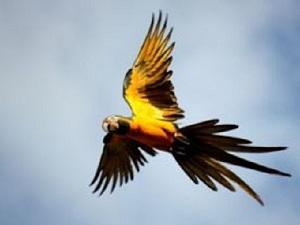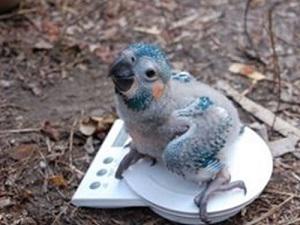Igor Berkunsky
Other projects
23 Sep 2008
Blue-Throated Macaw Conservation Project – Increasing the Availability of Nest Sites I
27 Sep 2010
Blue-Throated Macaw Conservation Project: Movements, Habitat Use and Population Size
The Blue-throated Macaw–BTM- (Ara glaucogularis) is a critically endangered and endemic macaw of Bolivia. The population has dramatically declined in the past and actually less than 200 wild individuals exist. Although pet trade is decreasing and habitat is still available, the population growth rate is low. The lack of nest cavities is one of main causes limiting the BTM reproduction. In order to develop management actions oriented to increase BTM population size, we will provide more artificial nest and we will evaluated their occupation and nesting success

The Blue-throated macaw is an endemic species of the savannas of Beni, and it is estimated that only 120 individuals remain in Bolivia. Actually, pet trade is decreasing, and habitat is available. However, densities are too small, and they are not assuring the viability of the population. One of main causes that are limiting the BTM reproduction is the low number of natural cavities for nesting. The savannas hold small forest islands dominated by palm and hardwood trees that are offering cavities for nesting. However, the competition for cavities with other birds, including other macaw’s species, is strong, making difficult the access of BTM to them. Since 2007 we conduct a field conservation project that includes the monitoring of wild nests.

The past year we provided three different kinds of artificial nest where two of these were occupied by BTM. However, we are limited to only 12 artificial nests, and we considered that increasing cavity availability, we will increase also BTM reproductive chances.

The project combines research and conservation objectives. Attempts to conserve BTM populations will be successful only if factors limiting their populations become in reduce. We identified lack of cavities as one of main causes limiting BTM reproduction. We observed several pairs of this macaw searching for suitable nest without success. We also have provided artificial nest, and BTM accepted them. If we increase the number of artificial nests before the reproductive season, we assure that more pairs of BTM will have access to these nests.
Our artificial nests are designed to impede the access of several predators, and to avoid the flooding. Predation and flooding are the main causes of nest failure. If BTM pairs use artificial nest, we would increase the probabilities of nesting success. Because we are monitoring wild nests, we could also assess which factors are limiting BTM reproduction and we would compare the effectiveness of the use of artificial nests. With this work we will develop a concrete action to promote the viability of this macaw species in one of the most critical environments at the world.